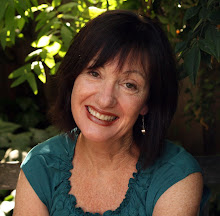There's an old saying in journalism: if you use half the information you've gathered in your finished piece, you haven't done nearly enough reporting.
All of which brings up the issue of selectivity. How do you select what you leave in and what gets left in the deep recesses of your hard drive? That's the kind of question that keeps reporters up at night. Or should. It's a big issue -- whether you're thinking column inches or the short attention spans of online readers. Given the limits of time and space, how do you make sure you are playing fair, giving the readers an adequate representation of the facts at hand?
If you read my post on objectivity yesterday, you can guess where I'm going with this. Sarah Palin was on a money-raising tour of the San Francisco Bay Area yesterday, where her "palling around with terrorists" (actually she changed the plural to singular) has become her new stump speech.
Her speech was covered by both the San Jose Mercury and the San Francisco Chronicle. Good pieces that covered what she said, within the context of what such attacks mean for the campaign. Both included responses from the Obama campaign as well. Balance, right?
But what struck me is what the reporters who covered the speech (or their copy editors) left out. Namely that Bill Ayers, the domestic terrorist to whom Palin refers, is a Distinguished Professor of Education and Senior University Scholar at the University of Illinois at Chicago. He and Barrack Obama met while working on a project that was a part of a national school reform effort financed by Walter H. Annenberg, the publisher and philanthropist and President Richard M. Nixon’s ambassador to the United Kingdom.
Seems to me, that little add should be included as well for the folks who read what Palin says, but never go any further than that.
Just to be fair. bk
Subscribe to:
Post Comments (Atom)






4 comments:
I really don't understand why Palin would be making comments about how Obama "would pal around" with a terrorist. I see it as only bringiug negative attention towards her by making comments that are not nessarily going to get people on her side. I say it's uncalled for and unnecessary... and especially since Bill Ayer is a Profeesor of Education and a Senior University Scholar. But I guess Palin didn't know that.
John McCain's campaign has consisted of a lot of negative comments and cheap blows to Obama, and now Sarah Palin is doing it to. Why can't they both just play fair and talk about the issues. McCain is obviously struggling in the polls and the only thing he can do is try to change voters minds about Obama. But obviously with Obama still in the lead, the people care more about the issues than past relations Obama had.
I think that bringing up what a reporter should or shouldn't place into their story brings me to wonder what process a real reporter goes through by selecting material to use for their piece. I bet it's best to report on what people want to know about with both sides showing. But the process of selecting quotes could be hard. Which ones to put in and which ones to leave out?
In response to Allison, it's true that you need to be fair in representing all sides to an issue. But reporters have to be careful, because not all sides carry equal weight. In a story about race affecting the presidential campaign, should you be quoting the KKK? They do have a side in the debate, but is it valid?
The "balance" that reporters insisted upon led to a lot of skewed public opinion about evolution, because those who argued for intelligent design were getting the same play as evolution supporters -- despite the fact that science does not say they are equal.
Post a Comment